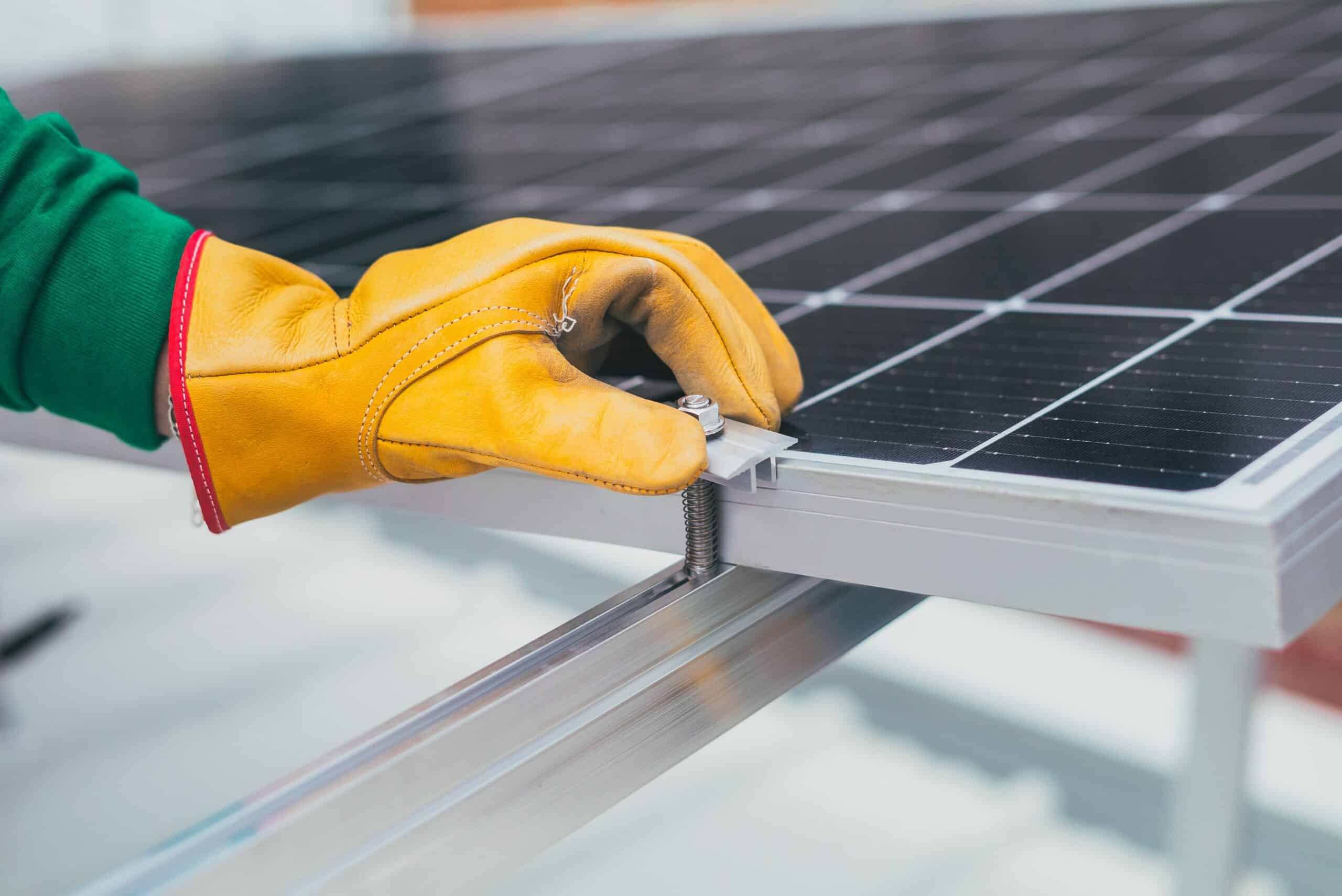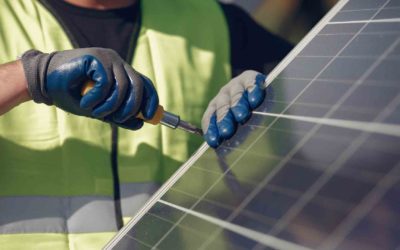Ever wondered just how much power those shiny solar panels can produce? Well, you’re not alone. It’s a common question that’s on the minds of many considering the switch to renewable energy sources.
Solar panels are an effective way to harness the sun’s energy, but their power output isn’t always straightforward. It depends on many factors, including the type of panel, its efficiency, and the amount of sunlight it receives.
Factors affecting solar panel power output
When it comes to solar panels’ power output, it’s crucial to understand that a variety of factors can affect it. It’s not simply a case of slapping any old panel on your roof and tapping into potentially limitless energy. Let’s take a closer look at some of these factors.
Types of Solar Panels
Different types of solar panels will generate varying levels of power. Currently, the market is primarily dominated by monocrystalline, polycrystalline, and thin-film solar panels. Technological advancements mean that some types have become more efficient in their conversion of sunlight into energy. If you’re looking for the most efficient type, you might want to consider monocrystalline panels.
Efficiency of Solar Panels
Another key aspect is the efficiency of a solar panel. Efficiency measures the ratio of sunlight hitting the panel that gets converted into usable electricity. Advanced models can approach 22-25% efficiency, yet more affordable options might range between 15-18%. Clearly, higher efficiency panels will produce more power, but don’t forget that they often come with a heftier price tag.
Amount of Sunlight
Finally, let’s not overlook the obvious: a solar panel is only as good as the amount of sun it receives. Depending on your geographical location, such as living in sun-drenched Australia or often-cloudy England, your panels will produce more or less power.
In solar power, as in life, context matters. By factoring in these variables, you’re taking a step towards making an informed decision about installing solar panels. Remember: more power, more savings, and less reliance on traditional energy sources.
Type of solar panels
When you’re thinking about how much power solar panels produce, the type of solar panel plays a crucial role. The three main types of solar panels available on the market are monocrystalline, polycrystalline, and thin-film. Each type generates varying levels of power and comes with its own set of advantages and disadvantages.
Monocrystalline Solar Panels are made from a single crystal structure. They’re the oldest and most developed kind of panel. The power output is high, but so is the price. You’ll get the best efficiency, around 15-20%, but you’ll also pay top dollar.
Polycrystalline Solar Panels don’t have one single crystal structure. These panels are simple to manufacture and are more affordable than monocrystalline ones. Their efficiency rates fall in the 13-16% range, less than monocrystalline panels, but they have a lower cost.
Thin-film Solar Panels are the new kids on the block. They’re the least efficient, with rates generally between 10-12%. They’re also the least expensive to manufacture, and that savings passes on to you. Yes, their power output is lower than the other two options, but their installation cost is also less. Plus, they’re more flexible and lightweight, making them easier to install.
The following markdown table provides a quick view:
| Type of Solar Panels | Efficiency (%) | Cost Level |
|---|---|---|
| Monocrystalline | 15 – 20 | High |
| Polycrystalline | 13 – 16 | Medium |
| Thin-film | 10 – 12 | Low |
The choice of the solar panel depends heavily on your power needs and budget. Their varying output levels mean that considering just efficiency isn’t enough. It’s crucial to strike an ideal balance between the power required, space available for installation and your financial capability.
Furthermore, it’s not just about generating the maximum amount of electricity. The decision should also take into account available space, the geographical location, and the amount of sunlight your solar panels can receive. The type of solar panel you choose will directly impact the power output. This impact is something you need to consider when deciding which solar panel is the most suitable for your needs.
Efficiency of solar panels
When you’re determining a solar panel’s efficiency, you’re actually looking at how well it converts sunlight into electricity. It’s crucial for you to understand that although a high efficiency might look appealing, what’s more important is its energy output. This would depend largely on your geographical location and the number of peak sunlight hours you receive daily.
Monocrystalline solar panels are currently the most efficient type on the market. They boast efficiencies from 15% to over 22%. This can be attributed to the high purity silicon used in their production. However, they also bear the highest price tag amongst the choices available. It’s vital to evaluate whether that extra efficiency justifies their price.
Polycrystalline solar panels display slightly lower efficiencies, generally ranging between 13% and 16%. They are created from multiple silicon crystals, which reduce their ability to convert sunlight. Yet, they provide a more budget-friendly option for those willing to compromise on efficiency for the sake of cost.
Thin-film solar panels have the lowest efficiency amongst the three, at around 10% to 12%. They are, however, the most cost-effective to manufacture and hence the least expensive to purchase. These panels could be ideal if you’ve significantly more space to accommodate the larger number of panels required to achieve similar power levels to the other types.
| Type | Efficiency |
|---|---|
| Monocrystalline | 15% – 22% |
| Polycrystalline | 13% – 16% |
| Thin-film | 10% – 12% |
Remember, while efficiency is an important aspect to consider, it’s just one of many factors. Your power needs, budget, available space and sunlight exposure also play significant roles in selecting the right solar panel. Yet, this understanding of different solar panel efficiencies provides a solid foundation for you to make that informed choice. For a more comprehensive understanding of solar power production, consider looking into other aspects such as optimal installation, maintenance practices, and the impact of weather conditions on solar energy output.
Sunlight and solar panel power production
To understand the power production of solar panels, it’s crucial to decipher the role of sunlight. An essential fact you’ll need to comprehend is that solar panel power production is directly proportional to the amount of sunlight exposure. In simple terms, the greater the unearthed sunlight, the more energy your solar panels will generate.
Let’s delve deeper.
Understanding The Process
Solar panels operate via the photovoltaic (PV) effect – a process in which sunlight strikes the solar cells, knocking free electrons to generate an electric current. More sunlight hitting the solar panel means more electrons are dislodged, resulting in an increased electric current. This fundamental principle reinforces why sunlight intensity and exposure are critical to a solar panel’s power output.
Sunlight Intensity vs Sunlight Duration
Interestingly, it’s not just the intensity of sunlight that matters, but also its duration. You might think blazing hot summer days lead to maximum output, but that’s not always the case. Sunlight duration plays an equally significant role. Consider a cooler day with a longer duration of sunlight exposure compared to a scorching summer day with shorter sunlight exposure – the cooler day may well provide a higher power output!
Your geographical location plays a significant role here. For instance, countries closer to the equator typically experience more consistent sunlight throughout the year, leading to steady power production.
Angle of Incident Sunlight
Another factor to consider is the angle at which sunlight strikes your solar panels. Sunlight hitting the panel head-on, at a 90-degree angle, is best for power production. If the angle is less optimal, it can reduce the panel’s efficiency, ultimately affecting its power output. That’s why many solar panel systems are adjustable – so you can change their orientation based on the seasons to maximise sunlight collection.
Talking about sunlight and solar power output wouldn’t be complete without mentioning environmental factors. The presence of obstacles such as buildings, trees, or even dust and dirt on the panels themselves, can limit sunlight exposure and hence reduce electricity output.
Remember, proper installation and maintenance of your solar panel can dramatically improve sun exposure and ultimately, your overall power production.
How to calculate the power output of solar panels
When it comes to calculating the power output of your solar panels, there’s a relatively straightforward formula you can follow. Don’t worry, you don’t need to be a maths whiz to understand it. All it takes is a little simplifying.
Before we delve into calculations, it’s vital to understand the key components Power (P), which is measured in Watts (W), and Energy (E), measured in Watt-hours (Wh). Simply put, power is the rate at which energy is produced or consumed and energy is the total output over time.
Let’s get to the calculation.
On average, the power of a solar panel is given by the formula: em>P = A * r * H * PR, where:
- A is the total solar panel area (m²)
- r is the solar panel’s efficiency ratio
- H is the annual average solar radiation on the tilted panels (kWh/m²/day)
- PR is the performance ratio
In comparison, the energy a panel can produce is calculated as: em>E = A * r * H * PR * 24
It’s important to bear in mind this formula gives an average. Actual power output can fluctuate based on daily weather variations and the cleanliness of your panels.
Staying on top of maintenance is crucial. Dirt, dust, and other environmental factors can decrease your panels’ efficiency. An obstruction-free setting along with ideal angling towards the sun ensures you get the most productivity from your solar panels.
Your installation expert should guide you on the optimal placement and angle. This advice, combined with regular maintenance checks, ensures you maximise your solar panels’ capabilities in the long run.
All in all, taking into account your geographical location and local weather patterns and combining this with the efficient use of your panels can help you get more mileage from your system. Remember—every bit of sunlight counts.
Conclusion
So, you’ve learnt how to work out the power production of your solar panels. You now understand the role of panel area, efficiency ratio, solar radiation, and performance ratio in the process. You’ve also seen how environmental factors can impact efficiency. Remember, regular maintenance and correct installation are key to reaping the benefits of solar power. Keep these factors in mind and you’ll be well on your way to maximising your solar energy production. Solar power isn’t just a sustainable choice, it’s a smart one. So, harness the power of the sun and enjoy the rewards.
Frequently Asked Questions
What is the focus of the article?
The article primarily focuses on understanding how to calculate the solar panel’s power output and the significance of maintaining the solar panels for their optimal efficiency.
How is the solar panel’s power output calculated?
The power output of a solar panel is calculated using a formula involving the panel’s area, its efficiency ratio, the amount of solar radiation it receives, and its performance ratio.
What crucial factors affect the efficiency of solar panels?
The efficiency of solar panels is influenced by several factors, including solar radiation, panel area, and its performance ratio. However, environmental conditions and how well a panel is maintained also play significant roles.
What does the article say about solar panel maintenance?
The article underlines the importance of regular maintenance and proper installation for maximising power production. Poor maintenance can reduce the efficiency of solar panels and therefore decrease power output.
Do environmental factors impact the effectiveness of solar panels?
Yes. The article highlights that environmental conditions like temperature, weather, and the angle of the sun can significantly impact a solar panel’s efficiency level.




